As more and more coins become the victim of ASIC mining rigs and dedicated mining farms it seems impossible for the average person to compete in mining any longer. That’s true for many coins, but there’s one coin that is still minable by individuals, and it has pledged to remain that way, even forking to halt the efforts of ASIC manufacturers to encourage Monero GPU mining.
I’m talking about Monero, a privacy-focused coin that is ideal for those who wish to mine cryptocurrencies with a home computer. Monero is still able to be profitably mined with your GPU thanks to the commitment of the Monero community to remain ASIC-free.
If you haven’t already learned about Monero mining pools, XMR mining, and the best home set-ups you can head over to my Monero Mining Guide to learn more about how to mine Monero.
To make things even better for your XMR mining efforts, you should consider joining a Monero mining pool. We will cover everything you need to know about finding the right pool, and the best XMR mining pools to join today.
If you are wondering if Monero has future potential, Guy happens to have a video covering just that topic:
Why use a Monero Pool?
Mining pools combine the hashing power of all its members to mine more efficiently. When you join a mining pool you’ll get smaller payouts, but they will also be more regular. There is less luck involved, and the earnings are smoothed out and regular. Each block mined by the pool is split between all the pool members in whichever payout method is being used by the pool (more on that later).
XMR mining on your own, called solo mining, is still possible with Monero via Monero GPU mining, and if you did find a block you’d get a substantial amount of coins. The problem is that with a home rig setup you’d need to get really lucky to ever find a block. So even if you did find a block, it isn’t likely you’d do so very often. This means you’re somewhat better off with a mining pool since it does away with a great deal of the variance that’s involved in mining cryptocurrencies.
Before you can actually join a mining pool, you have to make sure that you know what you are looking for from said pool.
Mining Monero Individually Vs. Joining Monero Pools
Mining Monero Individually
- Rewards: You receive the entire block reward and transaction fees when you successfully mine a block, but competing with larger pools demands significant computational resources.
- Control: You retain complete control over mining operations, like the choice of hardware and mining software. Individual operations incur steep energy and maintenance costs due to continuous operation.
- Privacy: There is no need to share details with a mining pool, but mining rewards are infrequent and unpredictable due to competition.
Joining Monero Mining Pools
- Rewards: The mining pool rewards are shared between all the participants, which means consistent albeit smaller rewards.
- Resource requirements: Less computational power is required individually, but the pool charges fees, reducing the net reward.
- Shared costs and privacy: Costs associated with mining are distributed among the participants, requiring the sharing of some personal or system information.
What to Look for in a Monero Mining Pool
Cryptocurrency mining pool features to look for are similar no matter which cryptocurrency you’re planning on mining. The top feature is going to be a trustworthy pool which is known for paying out all the proceeds due to the miners in the pool.
This isn’t uncommon for unscrupulous operators, but the more established pools are generally considered to be trustworthy. You’d be surprised how quickly savvy miners will discover pool operators who are trying to skim some of the payouts or hashing power.
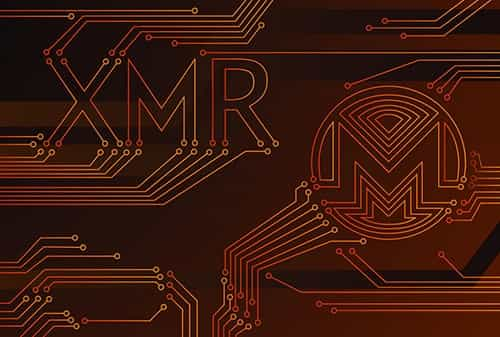
The next feature you’ll want to investigate is the fees charged by the pool. The higher the fees, the lower the payouts and all other things being equal you want to find a mining pool with the lowest fees so you can maximize your earnings. Generally, you’re going to find that most pools have very similar fees, but there are some that are higher or lower, and it’s worth your time to find out how much you’ll be giving up in fees.
A third factor you’ll want to consider is the location of the pool servers. You need to find a pool with servers that are located close to you, at least on the same continent. So, if you’re in Los Angeles it’s best to find a pool with servers in Los Angeles, or at least in the U.S. A pool that has servers only in Asia isn’t going to be most effective for you. This is because the closer the pool servers are to your location, the greater your hash power will be.
Another factor that some look at is the minimum payout of the pool. A lower minimum payout is always better, but if you aren’t too concerned with the frequency of withdrawals you might find a higher minimum payout to be acceptable. The power of your rig will also play into this. If you can hit the minimum payout in a day or two with your rig you’ll be less concerned than if it would take 10+ days to hit the minimum payout.
Many pool miners don’t consider the next factor, but it is really important in maintaining decentralization for the network. This is the total hashing power of the pool. Unfortunately, too many miners just look for the biggest pool and then join it, not thinking that they are increasing the hash power of a pool that is already extremely influential within the network. It is much better to choose a smaller pool, and you’ll find with Monero that there are a good number of miners who solo mine simply because it helps to keep the network as decentralized as possible.
Finally, check the uptime of the pool. Most pools do have a very high uptime, but it’s worth taking a minute to be sure. The higher the uptime is the better, because if the pool isn’t up it isn’t mining.
Monero Hard Fork
Before I go on to the best Monero mining pools I want to take a minute to talk about the Monero Hard fork for those who might not be aware of it.
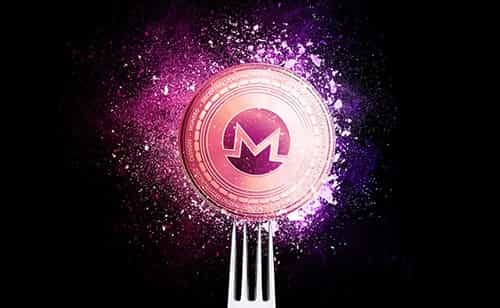
Basically what happened is that the leading ASIC producer Bitmain announced that they had developed an ASIC miner capable of working on the Cryptonight algorithm, which was the algorithm used by Monero (Monero has since switched to the RandomX algorithm, which is designed to be more ASIC-resistant and favor CPUs). The Monero community is so deeply against the centralization caused by ASIC mining that they decided to hard fork Monero to disable the ability to use ASIC miners on the coin. The hard fork occurred on April 6, 2018.
This hard fork sent a strong message to the ASIC mining folks, and we wouldn’t expect to see another ASIC miner for Monero. The fork also made the coin more privacy-focused, increasing its desirability amongst the privacy-concerned mining community.
The good news for individual miners is that the fork kept Monero mining easy enough that individuals can still mine the coin without worrying that ASIC rigs will dominate hash power and push aside the individuals. Monero remains extremely popular, which should also lead to price increases. In fact, it is so popular that its usage on the dark web has surpassed Bitcoin.
Mining difficulty dropped significantly immediately following the fork, and it remains much easier to mine Monero now than it was before the fork. Now is a great time to get started. Let’s take a look at some of the best Monero mining pools.
Top Monero Mining Pools
Now that you have a rough idea of what you need to be looking for in a mining pool, we can summarise a list of some of the most respected XMR mining pools currently in the market. Of course, this is not an exhaustive list and as with anything cryptocurrency related, you should do your own research.
A great place to begin your research is on a site like miningpoolstats.stream, which lists all the top mining pools and provides you with useful information about multiple pools at a single glance:
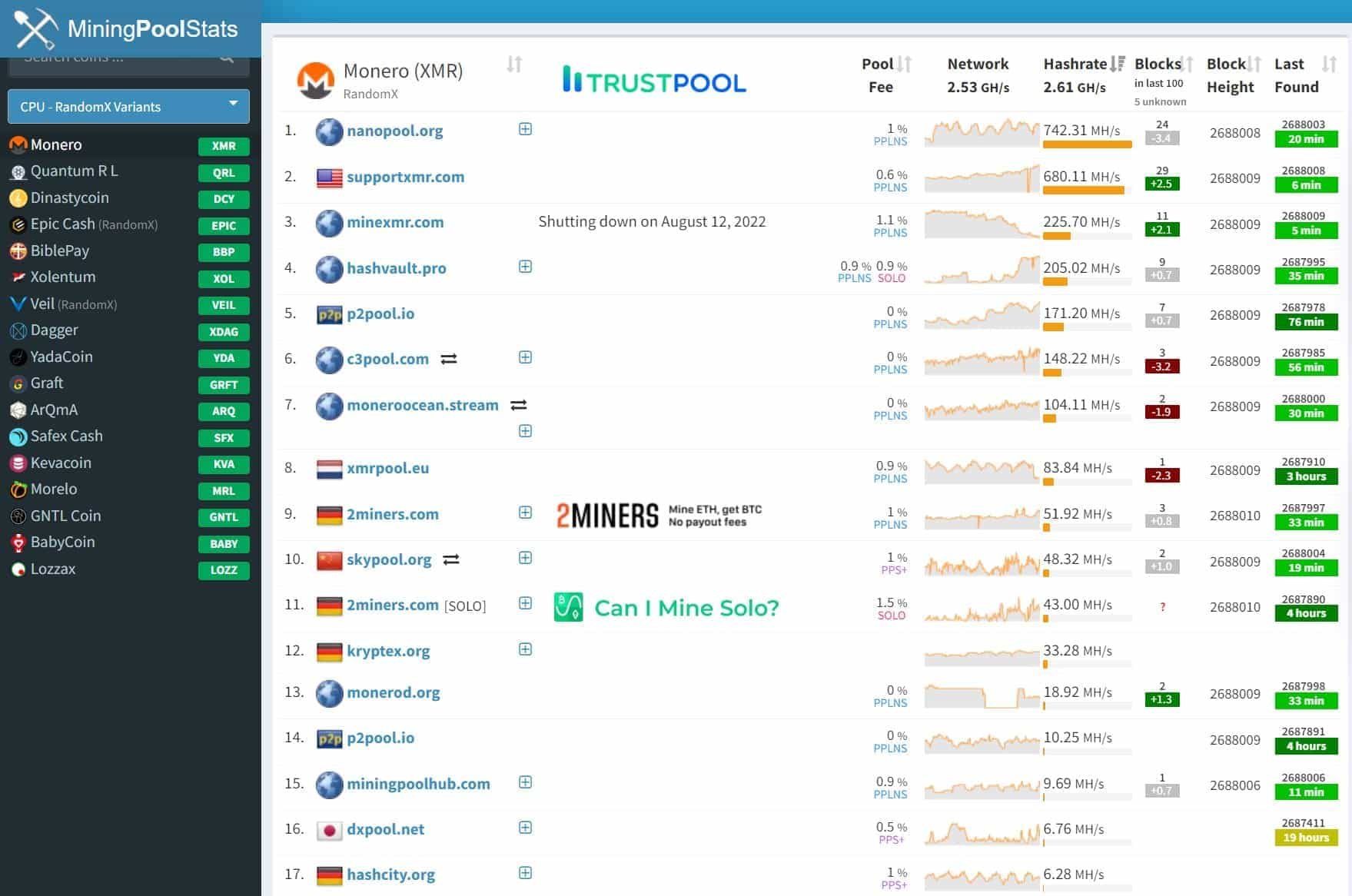
SupportXMR
SupportXMR consistently ranks in the top 3 Monero mining pools, with just over 6,000 active miners.

This pool runs 350 megahashes per second, which is among the highest you'll find since MineXMR, (the largest pool), announced that they will be shutting down (more on that later). The minimum payout is on the higher side at 0.1 XMR per transaction, and there is a 0.6% mining fee which is quite fair. Getting started with SupportXMR is very simple as there is a simple 4 step startup process:
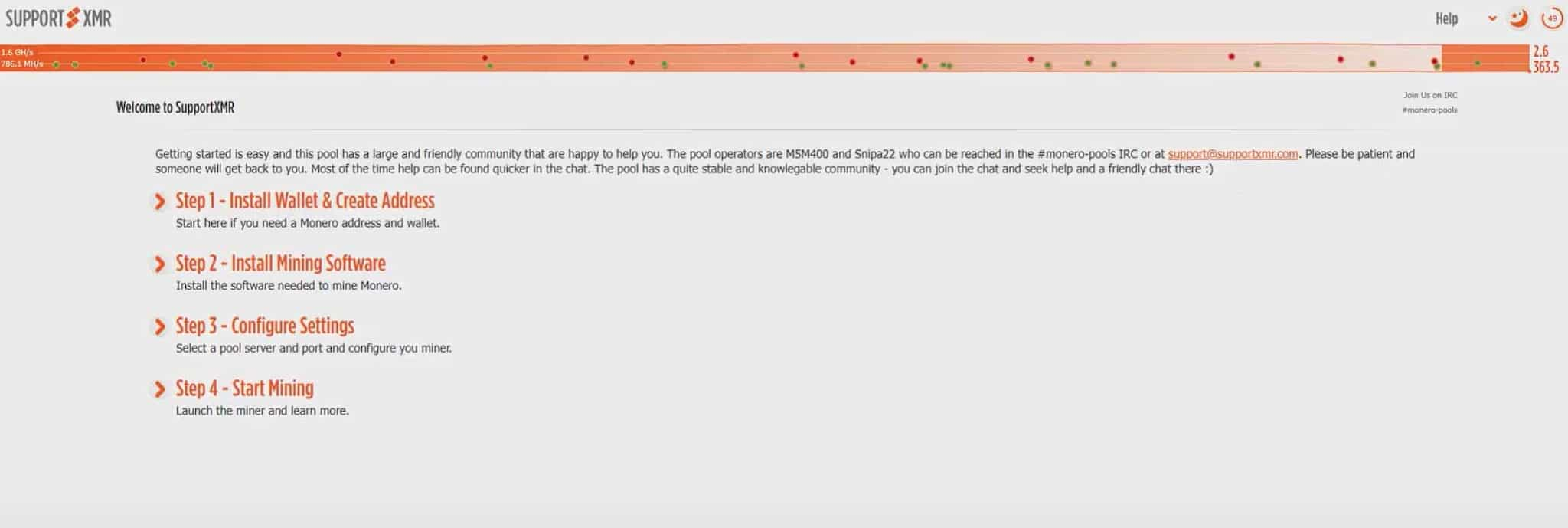
One thing I really like about SupportXMR is that it is great for beginners as they have a chat server available directly on the site where miners can chat with other miners and get any answers that they need.
NanoPool
Nanopool was one of the first and most well-established Monero mining pools around. The Nanopool platform features a lot of different cryptocurrency mining pools that can be joined aside from just Monero, as you can see below:
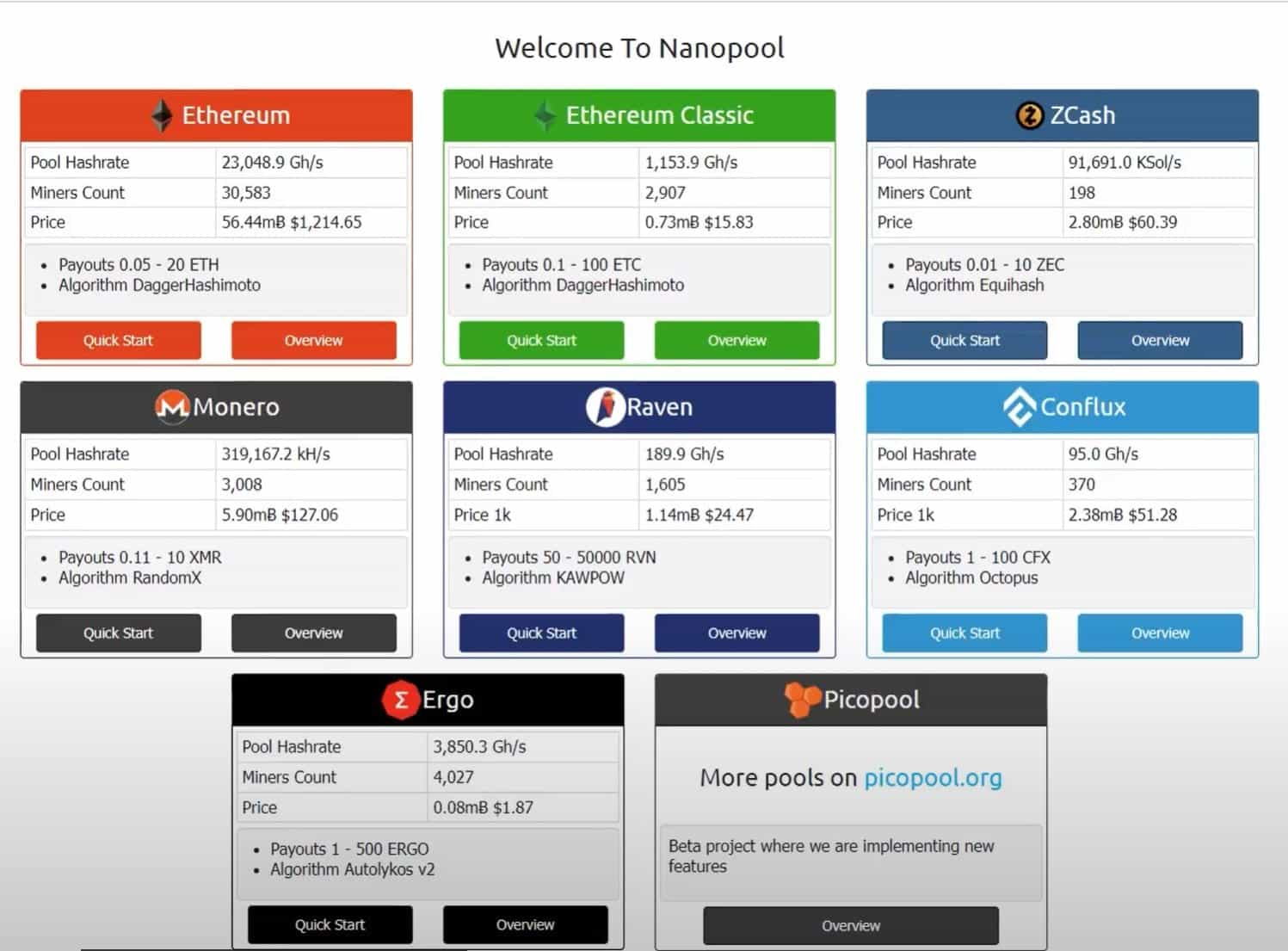
Nanopool is currently sitting at a decent 323 megahashes per second and comes in with about 3,000 miners.
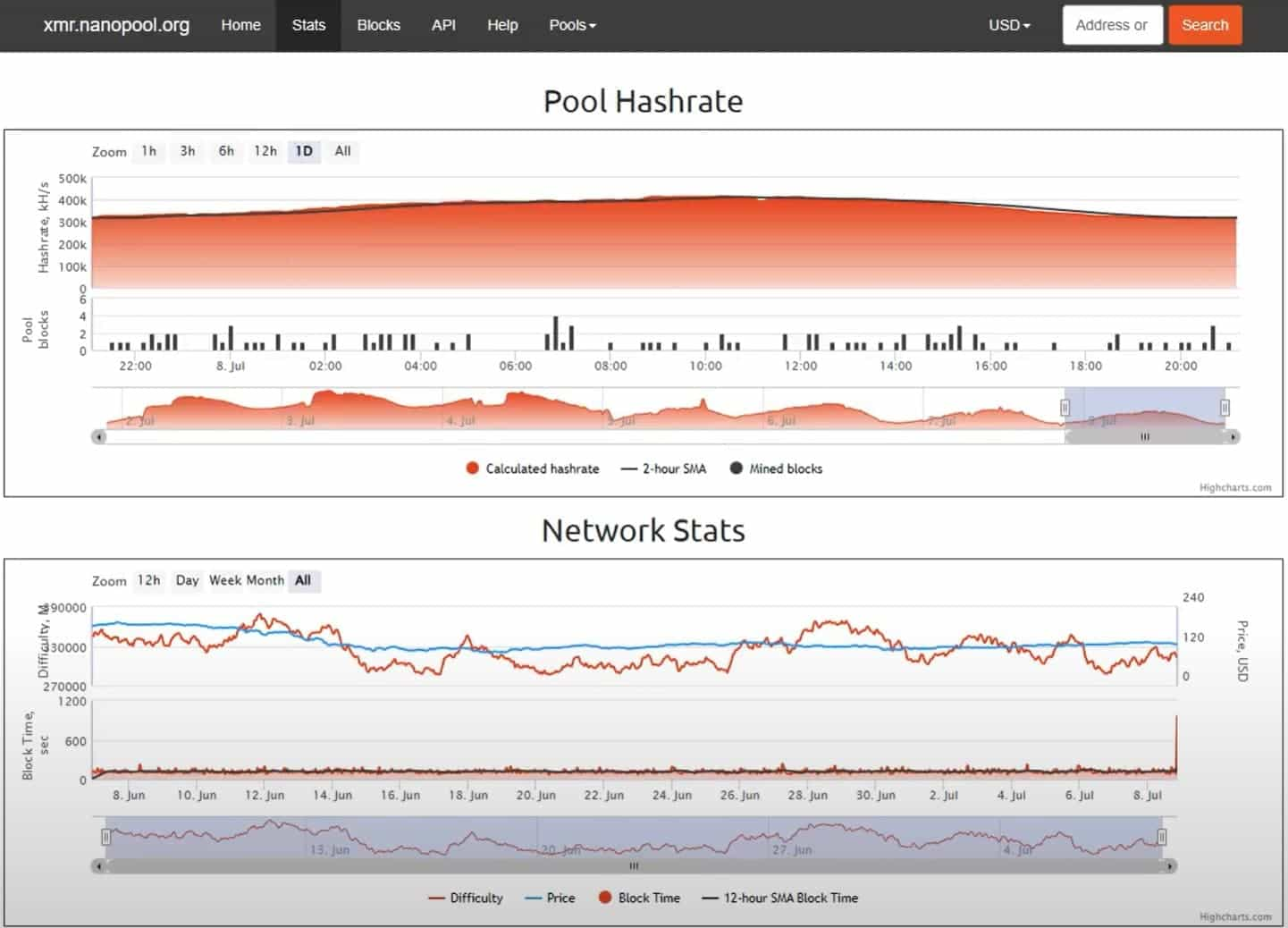
The minimum payout or withdrawal from Nanopool is 1 full XMR, so this pool is better suited for those who intend on mining Monero for longer term, and miners can expect a 1% mining fee. Nanopool is also known for having pretty good support and is compatible with Nice Hash for users who like to use both.
MoneroHash
MoneroHash is one of the oldest pools for Monero, having been launched in October 2014. They have a bit of a high mining fee at 1.6%, but they also allow you to mine directly to an exchange wallet, so you avoid transaction fees.
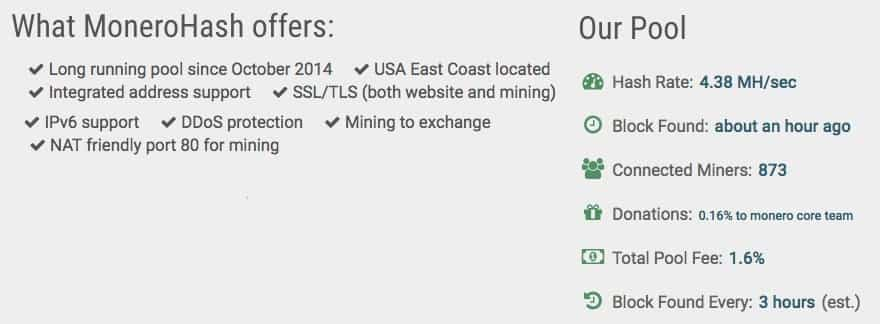
There’s a fairly high minimum payout of 0.5 XMR, so as with NanoPool, this mining pool is better suited for those looking to mine for longer term, especially if you don’t have a particularly powerful mining rig. The hashrate at MoneroHash is 4.32 MH/s and uptime over the past month was a solid 99.92%.
P2Pool
One of the largest and most popular Monero mining pools, MineXMR shut down on August 12, 2022. The popular mining pool achieved as high as 48% of all the hashrate on the Monero network, resulting in the community fearing a possible 51% attack. In the wake of the decision to shut down the pool before it got too large, MineXMR recommended the miners in the pool transition to P2Pool for a decentralized pool alternative and to contribute support for the Monero network.
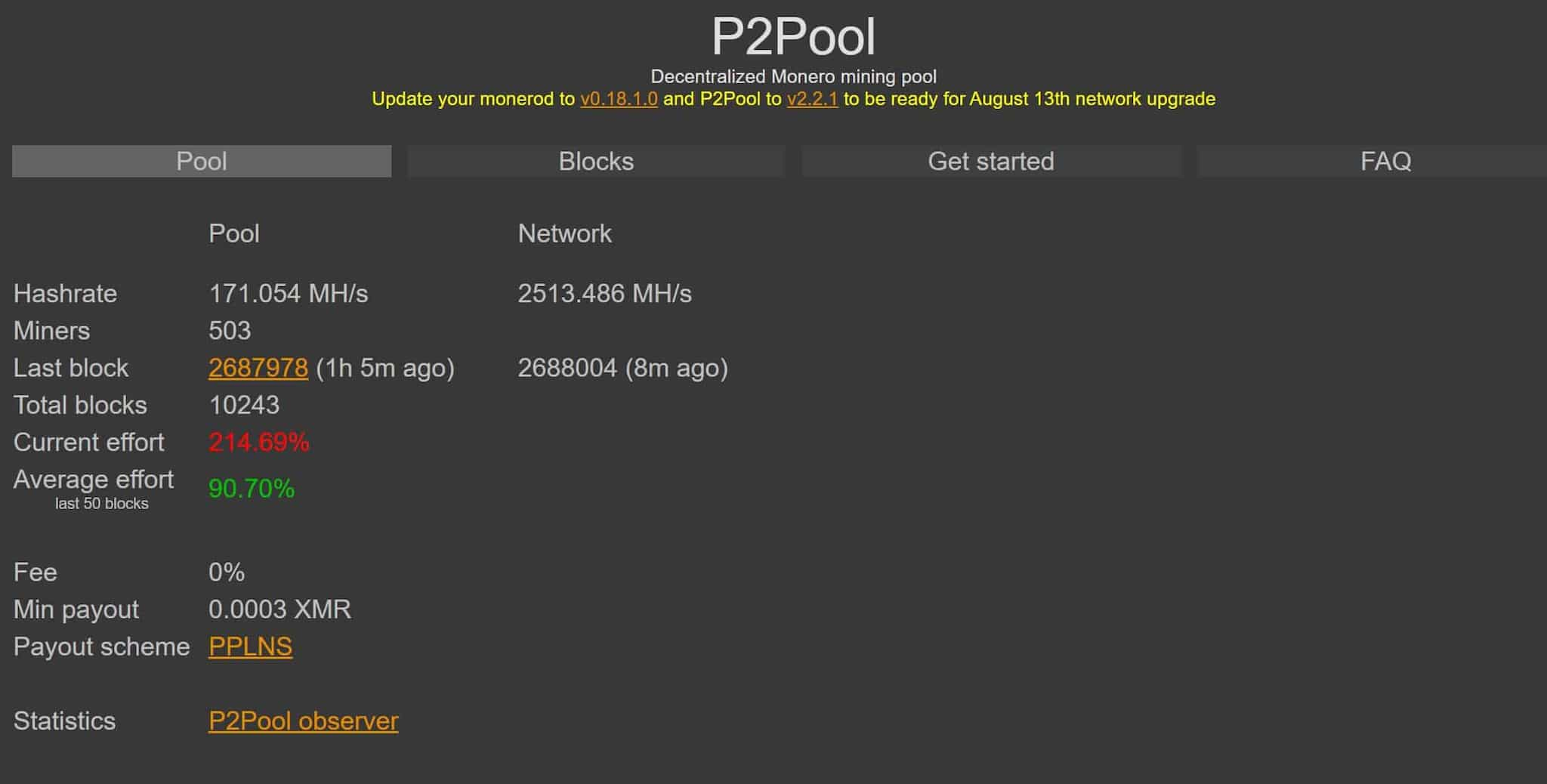
P2Pool combines the advantages of pool and solo mining. Users still control their Monero nodes and what it mines, but they get frequent payouts like a regular pool. This effectively decentralizes the pool and makes a 51% attack improbable.
Decentralized mining pools have been increasing in popularity, and P2Pool is the best choice for anyone interested in this type of mining. The site is also fairly beginner-friendly with video guides and a support section.
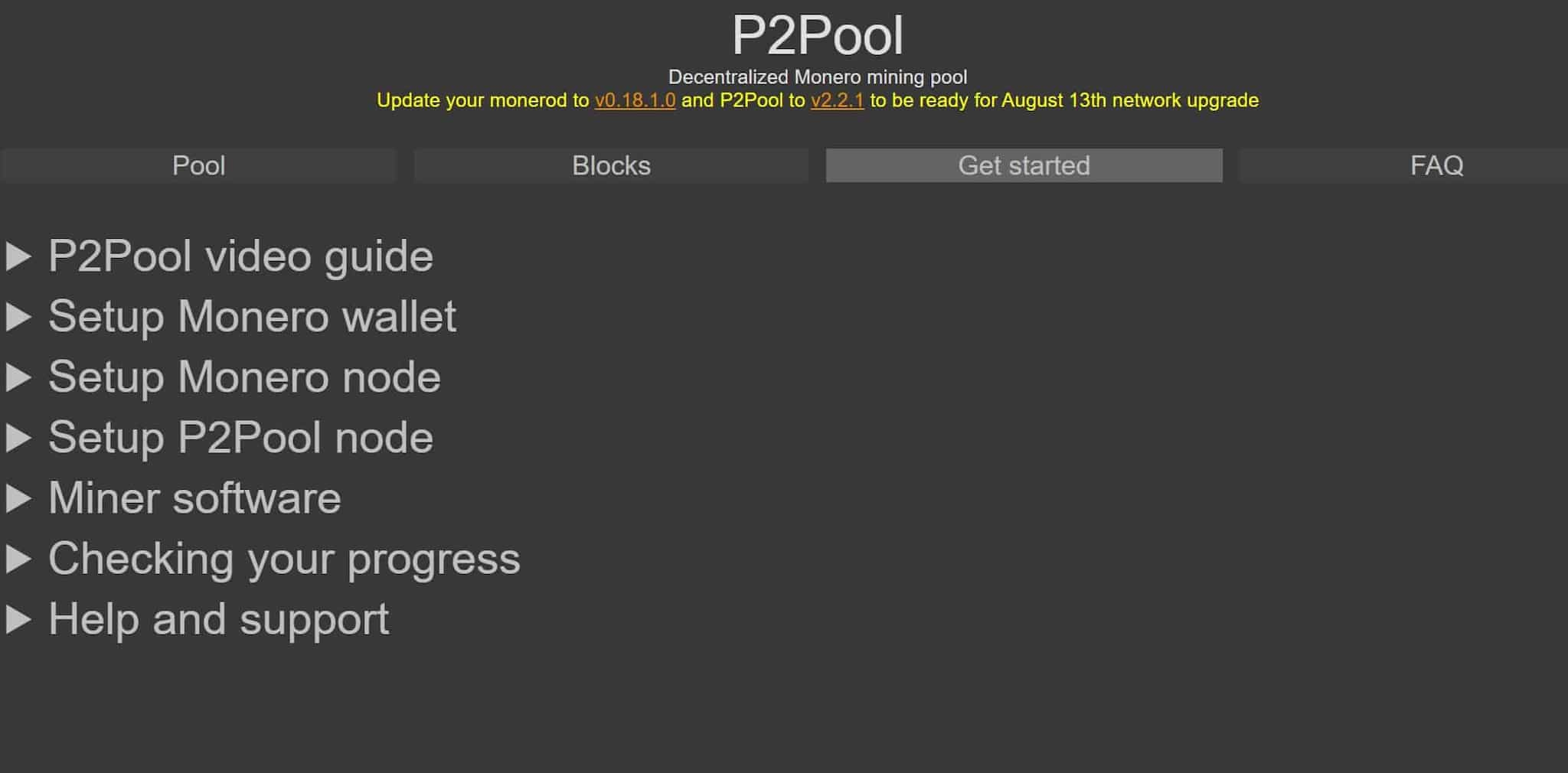
The website isn’t pretty, but it's functional. The pool has a hashrate of 170 megahashes per second, and there are currently only 508 miners in the pool. The minimum payout is 0.0003 XMR and there is a 0% fee.
2Miners
2Miners is the smallest mention on the list in terms of miners’ hash rates and payout. This is a good pool for those who are more the gambling type and are after the bigger, less frequent payouts than the miners who join the larger pools.
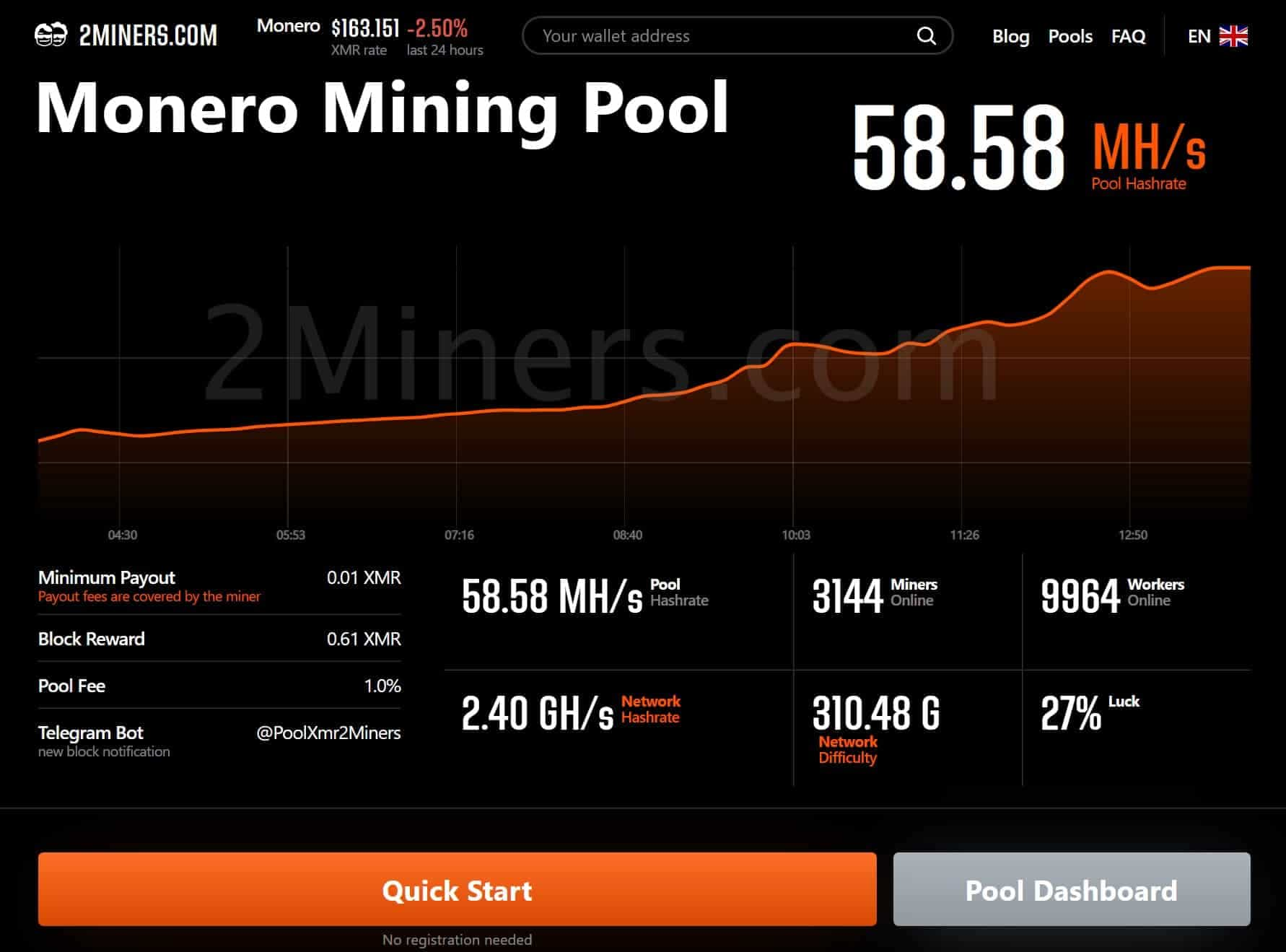
Notice the “luck” percentage statistic in the image above. If you are someone who frequents the casino, this may be the pool for you. 2Miners has a minimum payout requirement of .01 XMR, and a total of 58 megahashes per second which is contributed to by the 3144 miners in this pool.
Top Monero Wallets
Of course, if you are going to be mining Monero, you are going to want a good Monero (XMR) Wallet. We do have an entire article dedicated to the Best Monero Wallets if you want a breakdown and reasoning, but the TL;DR is that these are our top pics:
- Ledger Nano X
- Trezor Model T
- Guarda Wallet
- Official Moneero Desktop GUI
- MyMonero
- Monerujo
- Exodus Mobile Wallet
Monero Community Wallet Attack
In November 2023, the Monero community faced a significant security incident when its community crowdfunding wallet was breached, resulting in the loss of 2,675.73 XMR. This breach was a notable event in the cryptocurrency space, particularly for a coin that emphasizes privacy and security. The exact cause and method of the attack remained unclear, with investigations ongoing to identify the source and nature of the breach. This incident raised concerns about the security measures in place for community-managed wallets and highlighted the need for enhanced protective strategies in handling decentralized, privacy-focused cryptocurrencies. The Monero community's response to this incident was keenly observed by both supporters and critics, as it was crucial for maintaining trust in the ecosystem.
Conclusion
Monero GPU mining remains one of the best options for home mining enthusiasts, thanks to the Monero community’s commitment to remaining ASIC resistant.
When you combine your Monero hashing power with other users you can smooth out the variability in earnings, since mining pools will find blocks far more frequently than individual miners.
There are many good Monero mining pools, and your choice of which one to use should be based on the location of the servers, the fees charged, the trustworthiness of the pool, the uptime of the pool, and the hash rate of the pool.
Happy Hashing!
Frequently Asked Questions
XMR Mining can be done from a home PC. All you need is a powerful GPU and Monero miner software. You can learn the entire process by checking out our How to Mine Monero article.
If you choose to perform XMR mining solo, it can be very profitable in a “lottery” style game of chance that involves a lot of luck if you happen to mine the block. Many XMR miners prefer to join Monero mining pools such as the ones mentioned in this article as it provides fewer rewards, but more consistently and with a higher likelihood. But yes, Monero mining is profitable depending on your electricity costs.
Monero miners can make an average $0.10 to $0.50 per day depending on hashrate and hardware. It is also important to take electricity costs into consideration as Monero mining can often cost more in electricity than miners can actually earn. Searching online shows that miners are currently earning between $8 per month to $30, but this varies greatly depending on network conditions.
Disclaimer: These are the writer’s opinions and should not be considered investment advice. Readers should do their own research.



